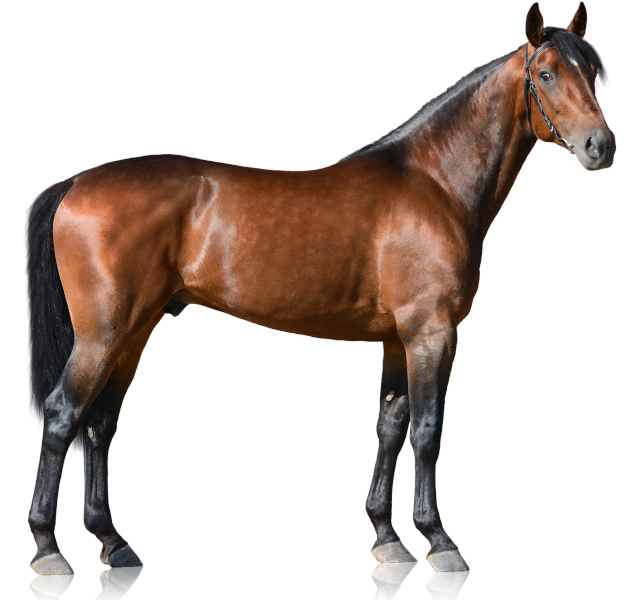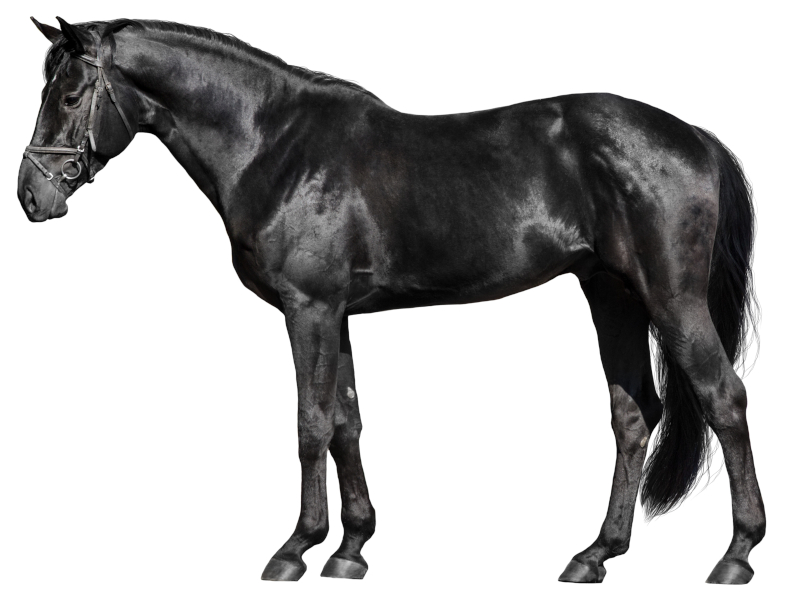Quick Summary

Click here for Price and Turnaround Time
Phenotype: The agouti gene controls the distribution of black pigment, and determines whether a horse will have a bay or black base coat color.
Mode of Inheritance: Autosomal dominant
Alleles: A = Dominant agouti allele (responsible for bay), a = Recessive agouti allele (causes black)
Breeds appropriate for testing: All breeds
Explanation of Results:
- If black pigment is present, horses with A/A genotype have black pigment restricted to the points. They will transmit the dominant agouti allele to all of their offspring.
- If black pigment is present, horses with A/a genotype have black pigment restricted to the points. They will transmit the dominant agouti allele to 50% of offspring and the recessive agouti allele to 50% of offspring.
- Horses with a/a genotype will have black pigment distributed uniformly over the body and will transmit the recessive agouti allele to all of their offspring.
Horse Coat Color Panel
$85 per animal
Red Factor and Agouti Panel
$50 per animal
Appaloosa Panel 1
$65 per animal
Full Color/Pattern Panel
$155 per animal
Shetland Pony Coat Color Panel
$100 per animal
Sample Collection
Horse DNA tests are carried out using cells from the roots of a hair sample (roughly 20-40 hairs).
1. Grab about 10 hairs at the base.
2. Wrap the hairs around your finger and give it a quick pull.
3. Check the ends to make sure the pulled hairs have roots.
4. Repeat the process until you have collected about 20-40 hairs with intact roots.
5. You can choose different places on the mane or tail. NOTE: For foals, we recommend pulling all hairs from the tail only.
6. Tape the hairs to the submission form and fold the form along the dotted line to protect the sample. Do not use ziploc bags as they can cause condensation that allows mold to grow on the hair.
7. Place the folded form containing the sample in a paper envelope and mail it to the laboratory.

Agouti controls the distribution of black pigment, with two known alleles.
The mutation causing an all black phenotype is an 11 base pair deletion in exon 2 of the gene agouti-signaling protein (abbreviated as ASIP but also commonly called agouti for short). This deletion is notated as (c.191_201del). This mutation is considered to be a loss of function mutation, meaning that the recessive (a) allele causes the resulting protein to be non functional. The dominant agouti allele (A) functions normally to restrict black pigment to the points of the horse, and the recessive (a) allele is unable to restrict pigment to the points of the horse and results in a uniform distribution of black pigment across the body. Breeders interested in producing black horses need to have breeding stock carrying the a allele, in addition to the E allele of the Extension gene.
Testing for the agouti gene allows breeders to identify animals that carry or have two copies of the recessive (a) allele and can transmit this allele to produce offspring with a black base coat.
